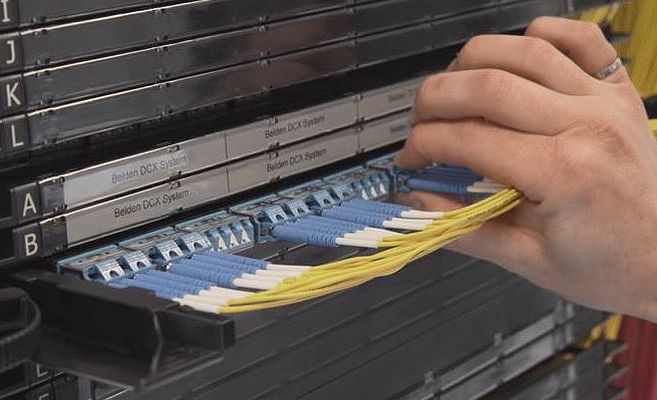6 Features to Look for in an Optical Distribution Frame
As the number of fiber connections increases to support new initiatives like 5G, IoT, IP migration, 4K content, and the shift to emerging 400G technology, optical distribution frames (ODFs) offer high-density fiber cable management in a compact amount of space.
But many of today’s ODFs lack user-friendly features and the ability to support quick, easy scaling – a feature that’s more important than ever in today’s connected environment where fiber connections continue to increase.
If an ODF investment is in your future, there are six features you should look for to maximize and futureproof your fiber infrastructure.
1. High Termination Density for Optimal Space Utilization
Optical distribution frames are designed to support large numbers of fiber connections however, there are differences between systems. Select an ODF designed to support as many fiber terminations as possible (per cabinet) to make the best use of valuable real estate and reduce the number of cabinets needed to support emerging technologies and contain cost.
2. Complete Fiber Protection for Signal Integrity
Choose an ODF designed to protect cables and patch cords with features such as articulated cable management trays and slack management to prevent damage and pinch points—specifically one with maximum performance features including controls to minimize any bend radius of incoming/outgoing cables.
Fiber cables entering the cabinet should be routed and protected until the patch cord exits the other side to ensure signal integrity is maintained for maximum performance and efficient signal transmission.
3. Easy Access to Cables & Patch Cords for Faster Moves, Adds & Changes

Moveable pull-out trays provide easy access to the optical distribution frame, patch cords and cassette backs while protecting cables when pulling out trays and providing sufficient clearance around each connector for easy connection/disconnection for more efficient moves, adds and changes (MACs).
Port-level labeling should be done for each port, decreasing the potential for human error and connection issues by clearly identifying the cord.
Support a clean and easy-to-manage install, with an ODF designed to use one patch cord length to connect from one port to any other port within the cabinet (also simplifying the BOM & ODF design).
4. Emerging Technology Preparedness
It is important that the selected ODF allow migration from Base-12 to Base-8, Base-16 and even Base-24 connectivity without requiring significant capital expenses.
If a data center begins migration to 40G or 100G and needs to install Base-8 equipment, for example, the system should allow this to be done alongside Base-12 equipment without losing any real estate. Cassettes should be able to be mixed and matched without losing density or requiring a change to the housing infrastructure.
5. Termination Methods for Reduced Costs
The ODF should handle multiple fiber configurations including pre-terminated trunk cables (using MPO, LC or SC connectors), or for field termination using either splice-on connectors or pigtails. These various options should be as simple to integrate as choosing the right cassette or adapter frame for the project, and the choice should have no impact on the connection density in the system when the same connector type is being compared.
6. System Scalability
An modular ODF system accommodates expansion making it easy to add cabinets as fiber connections increase enabling a cross-connect build in a single cabinet. As the installation expands to involve more connections, additional cabinets can be easily added when needed.
Modular ODFs can be deployed in various configurations (stacked back-to-back or-side-to side) allowing for optimal expansion conditions.
The Belden DCX ODF Solution*
*Not available in the U.S.
Manage high-volume fiber connections and add to fiber density without compromising on ease of use with Belden’s new DCX Optical Distribution Frame designed to fiber infrastructure ROI (both capital investment & operating expenses).
Designed to manage extremely high densities, the Belden DCX system supports virtually unlimited numbers of fiber connections for unrestricted growth potential and maximum ROI. The system offers the highest density available in today’s marketplace: 55% higher than other systems (when comparing the number of terminations per square foot, e.g., 9,216 fiber terminations in six square feet).
As fiber connections increase, Belden modular DCX modular frames enable the easy addition/removal of units as needed. DCX also offers:
- Easy patch cord access via pull-out trays & clearance around each connector
- Cable & patch cord protection through articulated cable management trays & slack management to prevent cable damage/pinch points
- Front-access design allowing for multiple configurations while facilitating scalability & optimizing footprint
- Easy fiber polarity with swappable modular cassettes to maintain port numbering sequences
Visit the DCX product page for more detail.
![System.String[]](https://assets.belden.com/transform/d60454c7-e587-4ea7-9bb3-2fe4d10a1634/benoit-chevarie?io=transform:fill,width:300,height:300)